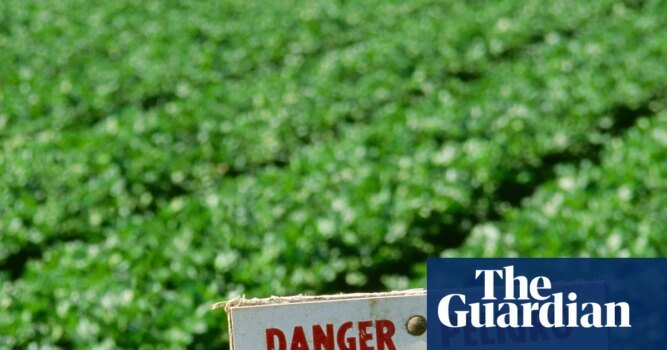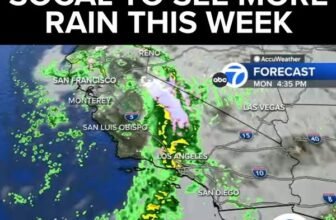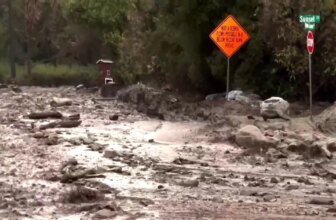California farms applied an average of 2.5m lbs of PFAS “forever chemicals” per year on cropland from 2018 to 2023, or a total of about 15m lbs, a new review of state records shows.
The chemicals are added to pesticides that are sprayed on crops such as almonds, pistachios, wine grapes, alfalfa and tomatoes, the review of California Department of Pesticide Regulation data found. The Environmental Working Group nonprofit put together the report.
The risk for uptake of PFAS is likely higher in water-rich fruits and vegetables, because water attracts the chemicals, and research has shown PFAS may concentrate at dangerous levels in some produce. The chemicals also pollute water supplies and present a higher risk to the often low income and Latino farmworkers.
The review’s findings reveal an “obvious problem”, said Bernadette Del Chiaro, senior vice-president of California for EWG.
“We know of every pound of forever chemicals presents a risk of contamination of our food, water, and soil, so it doesn’t make sense to deliberately be spraying these on California’s food,” Del Chiaro said
PFAS are a class of at least 16,000 compounds often used to help products resist water, stains and heat. They are called “forever chemicals” because they do not naturally break down and accumulate in the environment, and they are linked to serious health problems like cancer, kidney disease, liver problems, immune disorders, and birth defects.
Advocates began sounding the alarm over PFAS in pesticides in 2023. The Biden EPA attempted to discredit the author of one study that identified PFAS in pesticides, and the agency appeared to have lied about whether some of the chemicals are in pesticides. Under Donald Trump, the EPA has increased the number of PFAS proposed for use in pesticides.
At least 60% of active ingredients approved for use in common pesticides at the federal level over the last 10 years fit the most widely accepted definition of PFAS, a 2023 analysis of EPA data found.
The chemicals are used as an active ingredient in pesticides to kill weeds, insects or fleas on pets, or as inert, or inactive, ingredients that enhance how well a pesticide functions.
EWG’s review found 51 PFAS used in California across 58 counties. Among those with the highest concentrations were Fresno, Kern, San Joaquin, Napa and Riverside.
The PFAS in pesticides are short chain PFAS, meaning they are small and move widely throughout the environment. Many break down into Tfa, a type of PFAS that is accumulating around the world at levels higher than any other PFAS compound.
Industry and Trump officials claim the short chains are safer than other PFAS, but there is little health data for many, and what does exist points to serious health risks. The chemicals can also take hundreds or thousands of years to break down once in the environment.
The European Union has already banned many PFAS in pesticides, including two of the chemicals most used on California crops – bifenthrin and trifluralin.
“There’s absolutely a risk,” to the PFAS used in pesticides in the US, said David Andrews, an EWG co-author on the report.
“There’s a contribution to our total PFAS exposure and there’s a lot of uncertainty,” Andrews added.









